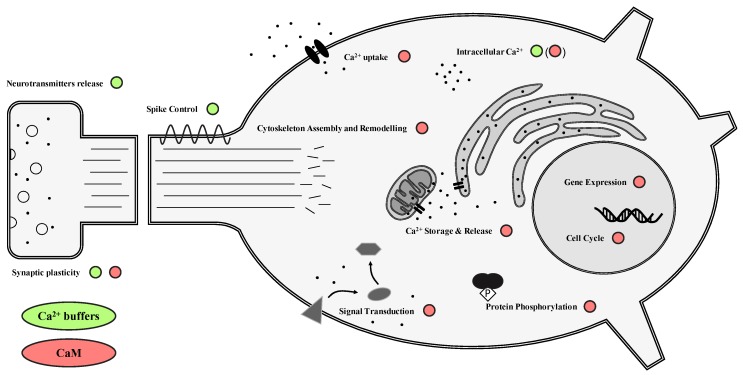Figure 1.
Schematic overview of the functions of buffer and sensor calcium-binding proteins (CBPs) in neurons. Ca2+ buffers directly control intracellular Ca2+ concentration during Ca2+ transients. As a consequence, they can indirectly influence spike duration and intensity, and therefore regulate the release and short-term synaptic plasticity of neurotransmitters. CaM and other Ca2+ sensors interact with a wide variety of intracellular proteins, often activating complex cascades of signal transduction through direct interaction or protein phosphorylation. These cascades control gene expression, cell cycle progression, apoptosis, and cytoskeletal remodeling, among other functions. Furthermore, CaM is known to affect the activity of ion channels that control Ca2+ uptake and storage, thereby modulating Ca2+ transients depending on external and internal signals, and can even act as a buffer at high concentrations. The overall effect on the intracellular Ca2+ dynamics of different CBPs influence all aspects of Ca2+ signaling, contributing to regulating cell homeostasis and reactions to changes in environmental conditions.

